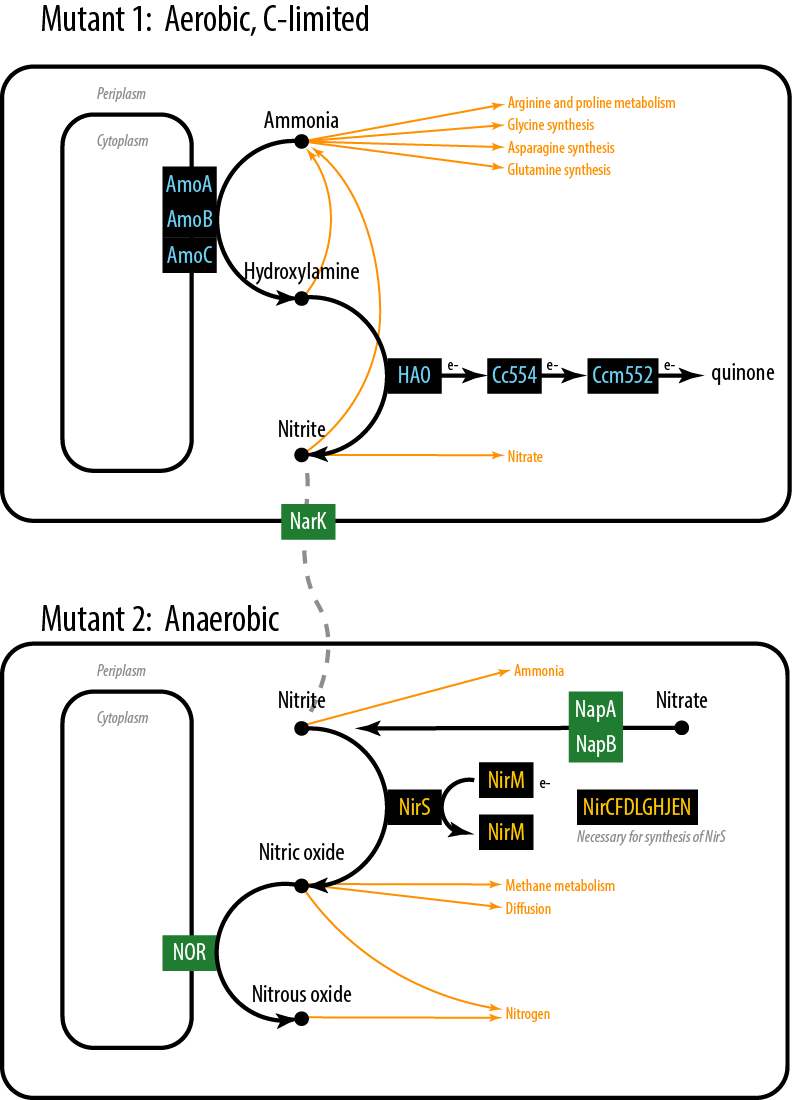Team:DTU-Denmark/Project
From 2013.igem.org
(→Project Description) |
|||
| Line 4: | Line 4: | ||
==Project Description== | ==Project Description== | ||
| - | Our project removes ammonia from waste water, and via two ''E. coli'' mutants turns it into nitrous oxide. | + | Our project removes ammonia from waste water, and via two ''E. coli'' mutants, turns it into nitrous oxide. |
Global demand for fixed nitrogen has increased to the point that half the human population now relies on chemical fertilizer to grow their food. While fertilizer is a requirement for modern life, runoff from overfertilized farmland can cause eutrophication. In the presence of abundant ammonia, algae overgrow and consume the much of the available oxygen in the water. This results in decreased biodiversity throughout the watershed. Within Europe, 53% of lakes are eutrophic. | Global demand for fixed nitrogen has increased to the point that half the human population now relies on chemical fertilizer to grow their food. While fertilizer is a requirement for modern life, runoff from overfertilized farmland can cause eutrophication. In the presence of abundant ammonia, algae overgrow and consume the much of the available oxygen in the water. This results in decreased biodiversity throughout the watershed. Within Europe, 53% of lakes are eutrophic. | ||
Using two E. coli mutants built with genes from Nitrosomonas europaea and Pseudomonas aeruginosa, we provide a system to reverse nitrogen fixation. Our mutants consume ammonia and produce nitrous oxide, releases a sustainable source of energy when decomposed into nitrogen and oxygen. We also provide a prototype of a bioreactor that could be scaled up and deployed in the field to simultaneously clean the water and produce energy. | Using two E. coli mutants built with genes from Nitrosomonas europaea and Pseudomonas aeruginosa, we provide a system to reverse nitrogen fixation. Our mutants consume ammonia and produce nitrous oxide, releases a sustainable source of energy when decomposed into nitrogen and oxygen. We also provide a prototype of a bioreactor that could be scaled up and deployed in the field to simultaneously clean the water and produce energy. | ||
| - | |||
==Details== | ==Details== | ||
Revision as of 09:42, 29 September 2013
Project Description
Our project removes ammonia from waste water, and via two E. coli mutants, turns it into nitrous oxide.
Global demand for fixed nitrogen has increased to the point that half the human population now relies on chemical fertilizer to grow their food. While fertilizer is a requirement for modern life, runoff from overfertilized farmland can cause eutrophication. In the presence of abundant ammonia, algae overgrow and consume the much of the available oxygen in the water. This results in decreased biodiversity throughout the watershed. Within Europe, 53% of lakes are eutrophic.
Using two E. coli mutants built with genes from Nitrosomonas europaea and Pseudomonas aeruginosa, we provide a system to reverse nitrogen fixation. Our mutants consume ammonia and produce nitrous oxide, releases a sustainable source of energy when decomposed into nitrogen and oxygen. We also provide a prototype of a bioreactor that could be scaled up and deployed in the field to simultaneously clean the water and produce energy.
Details
 "
"





